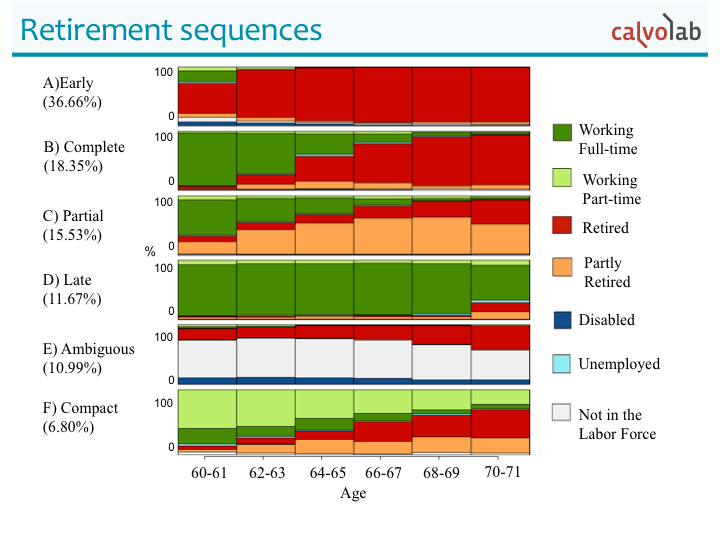Social Epidemiology Unit member Esteban Calvo and his coauthors recently published research in the Journal of Aging and Health on the dynamic association between retirement sequences and functional ability. The work highlights potential new approaches to simultaneously promote productive engagement and health later in life.
An aging population poses challenges to the prosperity and well-being of modern societies, requiring new evidence to stimulate novel policy solutions to concurrently promote productive and healthy aging. In this context, numerous studies investigate the association between labor force patterns near retirement and the functional ability to perform activities of daily living (ADLs) later in life. Most of these studies analyze labor force patterns as a snapshot of a certain labor force status at a given point in time or a snapshot of a transition from one status to another. The study by Calvo and colleagues departs from this snapshot approach to focus on “retirement sequences,” encompassing a series of chronologically ordered labor force states and transitions between the ages 60 and 70,
In prior work Calvo and colleagues used data from the Health and Retirement Study for 7,880 Americans throughout their 60s to identify six prominent types of retirement sequences: early (retirement by or before age 62), ambiguous (moving from out of the labor force to retirement), complete (conventional retirement around age 66), late (retirement typically after age 66), partial (partial retirement around age 66), and compact (partial retirement from part-time job). Early and ambiguous sequences can be characterized as showing weaker attachment to the labor force, complete and late as conventional models often discussed in academic and policy debates, and partial and compact as unconventional models that have received relatively less attention.
In the newly published work they used the Health and Retirement Study data to study how retirement sequence types were associated with functional ability in later life. They found that the old conventional retirement model, where people completely retired at expected ages from full-time jobs (complete sequence) and the new conventional model of continued employment promoted by scholars and policy makers (late sequence) are both associated with better functional ability, compared to the early and ambiguous sequences where individuals have weaker attachments to the labor force. Interestingly, alternative unconventional models (partial and compact sequences) are also associated with better functional ability. These unconventional models entail combinations of part-time jobs and partial retirement, which may be considered as new ways of active engagement in productive activities that could help to protect functional ability in old age.

Adapted from Calvo, Esteban, Ignacio Madero-Cabib, and Ursula M. Staudinger. 2017. “Retirement Sequences of Older Americans: Moderately De-standardized and Highly Stratified across Gender, Class, and Race.” The Gerontologist. http://dx.doi.org/10.1093/geront/gnx052

